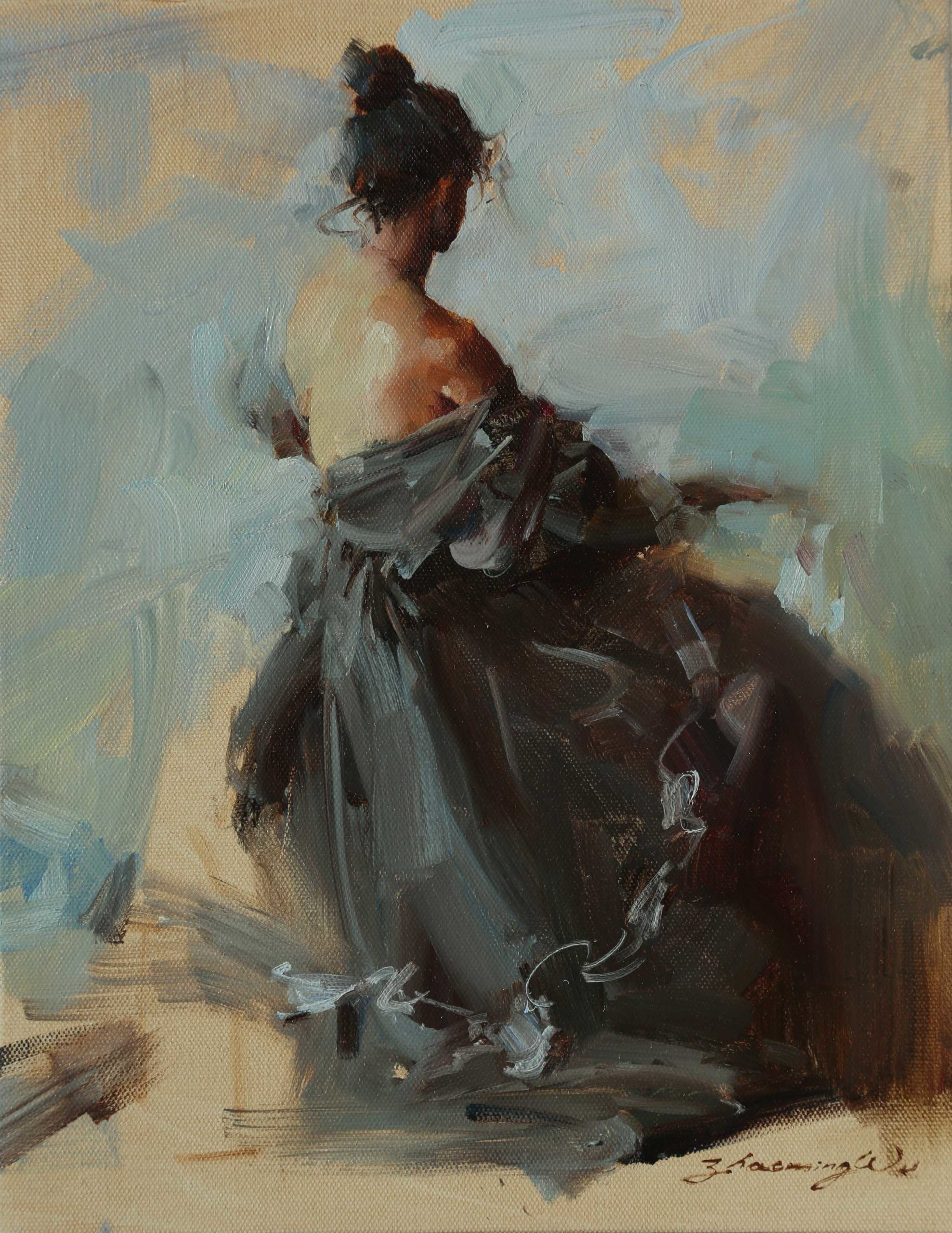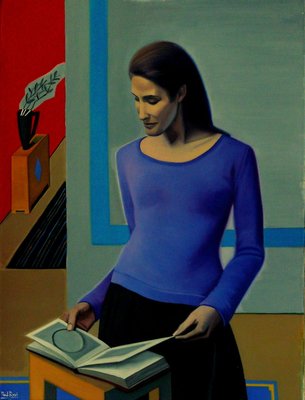The Advancement of Figurative Oil Painting: Understanding Its Historic Relevance and Modern Interpretations
The advancement of figurative oil paint offers as a compelling lens via which to analyze the interplay in between artistic expression and historic context. Contemporary artists, attracting from this abundant heritage, are now reinterpreting the human number in ways that test traditional stories.
Origins of Metaphorical Oil Paint
The origins of figurative oil paint can be mapped back to the very early Renaissance in Europe, particularly in the 15th century. The advancement of oil paint permitted for greater depth of shade and information, boosting the realistic look and vibrancy of their work.

In this transformative period, numbers were commonly shown within contextually abundant atmospheres, showcasing not only their physical characteristics but also their mental states. Leaders such as Jan van Eyck and Titian used the tool's flexibility, utilizing layering strategies to attain brightness and structure. This development facilitated the representation of complex fabrics and the subtleties of complexion, adding to the growth of portraiture and narrative scenes.
In Addition, the Renaissance focus on humanism fostered an appreciation for uniqueness, which consequently influenced musicians to create even more relatable and dynamic numbers - figurative oil painting. As a result, figurative oil paint became an effective car for narration and emotional involvement, laying the foundation for future creative movements and designs
Key Historic Movements
Substantial historical activities have formed the evolution of metaphorical oil paint, each contributing one-of-a-kind viewpoints and strategies that expanded the tool's possibilities. The Renaissance marked a zero hour, stressing realism and the human kind, with artists like Leonardo da Vinci and Michelangelo pushing the borders of anatomical accuracy and viewpoint. Following this, the Baroque era brought remarkable contrasts of light and darkness, exemplified by Caravaggio, who instilled spiritual styles with extreme emotionality.
The 19th century presented Romanticism and Realism, where artists such as Delacroix and Courbet tested timeless ideals, concentrating on specific expression and everyday life. The introduction of Impressionism better revolutionized the medium by highlighting the results of light and color, resulting in a separation from typical representation.
In the early 20th century, motions like Expressionism and Cubism redefined figurative paint via abstraction and the exploration of psychological deepness. Each of these activities not just reflected the societal modifications of their times however additionally laid the groundwork for contemporary interpretations. The interplay between these historical motions has actually produced an abundant tapestry of philosophies and styles, influencing contemporary artists in their quest of catching the human experience on canvas.
Methods and Materials Development

Throughout the Baroque duration, methods such as chiaroscuro and sfumato arised, improving the emotional vibration of figurative compositions. Musicians began to experiment with lusters and impasto, manipulating appearance and luminosity. By the 19th century, innovations like using pre-mixed paints in tubes revolutionized access, enabling musicians to paint en plein air and capture the fleeting results of light.
The 20th century experienced the intro of synthetic pigments and tools, which expanded the combination and altered the consistency of oil paints. In addition, the exploration of brand-new application methods, such as scheme knives and brushes of differing rigidity, further varied artistic expression. Jointly, these innovations reflect the progressing partnership between materials, strategies, and the imaginative vision fundamental in figurative oil painting.

Contemporary Analyses
Contemporary analyses of metaphorical oil paint mirror a vibrant discussion in between practice and technology, where musicians test see this here developed standards and check out varied styles. This development materializes in different methods, as contemporary artists blend classic techniques with modern ideas, commonly resolving social, political, and individual stories.
Lots of professionals draw motivation from historical jobs, yet they instill their items with contemporary point of views, utilizing the human form as a vehicle for commentary on identity, culture, and sex. Artists significantly explore abstraction, distortion, and multimedias, which permits a broader analysis of the figure and its context.
Moreover, making use of brilliant shade palettes and non-traditional compositions often offers to interrupt traditional watching experiences, prompting crucial engagement from target markets. This shift in emphasis extends past looks; it reflects a growing recognition of the complexities of human experience in an interconnected globe.
As figurative oil paint continues to evolve, it stays a vital tool for exploring the subtleties of contemporary life, symbolizing both a regard for heritage and a commitment to progressive idea. The outcome is a rich tapestry of expression that reverberates with the complexities of the contemporary human condition.
Effect On Modern Art
The effect of metaphorical oil paint on modern art is profound, as it has continually inspired a myriad of creative motions and techniques throughout the 20th and 21st centuries. From Expressionism to Surrealism and beyond, the exploration of the human number has actually continued to be a central style, enabling musicians to communicate intricate feelings and stories. This emphasis on metaphorical depiction has actually resulted in a re-examination of standard strategies, causing cutting-edge approaches that blend realism with abstraction.
Additionally, modern musicians have actually welcomed metaphorical oil paint as a way to address social and political issues, utilizing the medium to challenge understandings of gender, identity, and culture. The revival of passion in figurative operate in recent years reflects a longing for connection in an increasingly electronic globe, where human experience and feeling are vital.
Furthermore, the dialogue between metaphorical oil painting and modern art appears in the works of musicians such as Kehinde Wiley and Jenny Saville, who make use of historic referrals while instilling their pieces with contemporary importance. Inevitably, figurative oil painting remains to form and redefine modern creative expression, underscoring its long-lasting relevance in the art world.
Conclusion
The evolution of figurative oil paint underscores its historic significance and versatility across different artistic motions. Inevitably, figurative oil painting continues to be a vital tool for discovering the human experience, resonating exceptionally in today's electronic landscape.
The evolution of figurative oil paint offers as a compelling lens via which to analyze the interaction in between artistic expression and historical context.Considerable historic movements have shaped the advancement of metaphorical oil painting, each contributing special ideologies and techniques that expanded the tool's opportunities.As historic movements formed the trajectory of metaphorical oil paint, the techniques and materials utilized by musicians have actually additionally undergone significant makeovers. figurative oil painting.The impact of figurative oil painting on contemporary art is extensive, site link as it has actually continuously motivated a myriad of imaginative motions and methods throughout the 20th and 21st that site centuries.The development of figurative oil painting highlights its historical relevance and flexibility throughout numerous imaginative activities
Comments on “Why Figurative Oil Painting Remains a Timeless Choice for Artists”